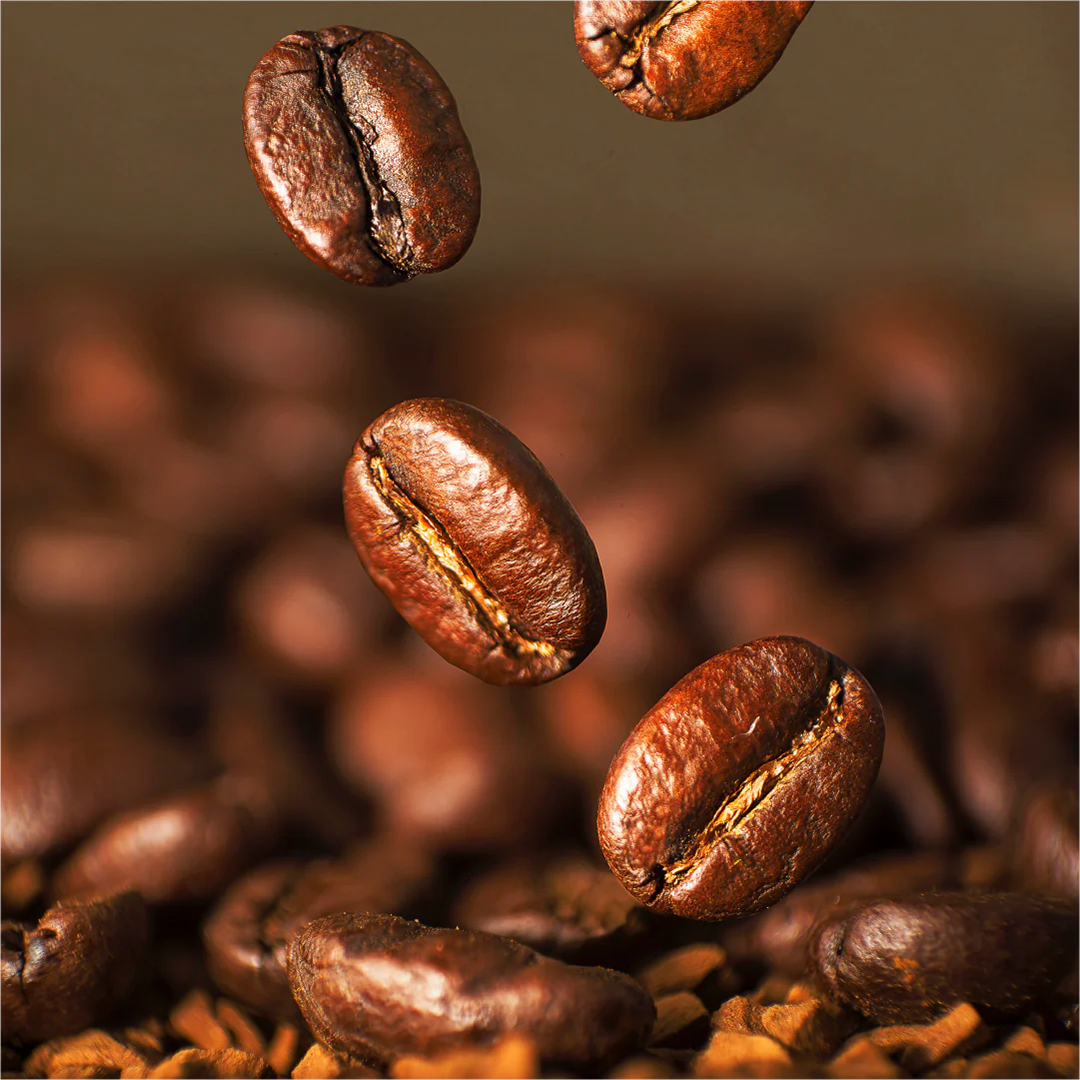Understanding caffeine levels in coffee
Coffee's stimulating effect is primarily due to its caffeine content, which varies based on the type of coffee bean and the brewing method. Decaffeinated options provide a suitable alternative for those who want to enjoy the flavour of coffee without the stimulating effects.

Caffeine content in coffee beans
The two main species of coffee beans are Coffea arabica (Arabica) and Coffea canephora (Robusta). They differ significantly in their taste as well as caffeine concentrations:
- Arabica Beans: Known for their smooth and nuanced flavours contain approximately 1.1% to 1.7% caffeine by weight.
- Robusta Beans: These beans have a stronger, more bitter profile and a higher caffeine content, ranging from 2% to 4.5% by weight.
This means Robusta beans can contain nearly double the caffeine of Arabica beans, influencing both the taste and the stimulating effect of the coffee.
-v1734320256877.png)
Impact of brewing methods on caffeine levels
The brewing method significantly affects the caffeine content in your cup.
Espresso:
- Arabica: A single 30 ml (1 oz) shot contains around 100 mg of caffeine.
- Robusta: A single 30 ml (1 oz) shot contains around 200 mg of caffeine.
Note: a small flat white often has one shot, whereas a large one could have two or more.
Also, espresso is made differently around the world. Therefore, the amount of coffee used will change the amount of caffeine. For example, in Italy as little as 7 grams of coffee may be used resulting in around 70 mg of caffeine in a single shot. In Australia 10 to 11 grams is quite common. Often, 20 to 22 grams of coffee is used in a double shot basket which produces two shots of around 30 ml each. Although we like to weigh our shots and not measure them simply by volume down under. For example, 22 grams of coffee should result in 44 to 48 grams of liquid espresso.
-v1734320538114.jpg)
Here's how Filter and Cold brew methods compare, based on a standard 240 ml (8 oz) serving:
Drip (Filter) coffee
- Arabica: Approximately 100 mg of caffeine.
- Robusta: Approximately 200 mg of caffeine.
Cold brew
- Arabica: Approximately 150 mg of caffeine per 240 ml serving.
- Robusta: Approximately 300 mg of caffeine per 240 ml serving.
The concentration of caffeine differs between various brewing methods.
The daily recommended caffeine intake is 400 mg in most countries including Australia.
Decaffeinated coffee: Enjoying the flavour without the buzz
For those who love the taste of coffee but wish to limit their caffeine intake, decaffeinated coffee offers an excellent solution. Decaffeination processes remove most of the caffeine from the beans, resulting in a beverage that retains much of the original flavour profile with minimal caffeine content.
-v1734320369921.png)
A standard 240 ml (8 oz) cup of decaf coffee contains about 2–3 mg of caffeine, a negligible amount compared to regular coffee.
Decaf coffee allows individuals to enjoy the rich, aromatic experience of coffee without the stimulating effects, making it a suitable choice for those sensitive to caffeine or looking to reduce their intake.
Other factors
This is not all. Roasting profile, grind size, water temperature and pressure (if used) can also affect the amount of caffeine that will be in the cup. Additionally, the farm as well as each individual coffee region and plant subspecies will have some variation.

Caffeine is non-volatile and therefore quite stable. Contrary to popular belief, darker roasted coffees are not significantly lower in caffeine than a lighter roasted counterpart, given that all other variables are identical. This also means that older beans still maintain a similar level of caffeine to a fresh roast. However, roasting profiles can impact the solubility of coffee and indirectly affect the amount of caffeine in the cup.

Conclusion
Understanding the factors that influence caffeine content in coffee such as bean type and brewing methods can empower consumers to make informed choices that align with their taste preferences and caffeine tolerance. Whether you prefer the robust kick of a Robusta espresso, the balanced profile of a drip-brewed Arabica, or the mellow experience of decaf, there's a coffee option tailored to your needs.



